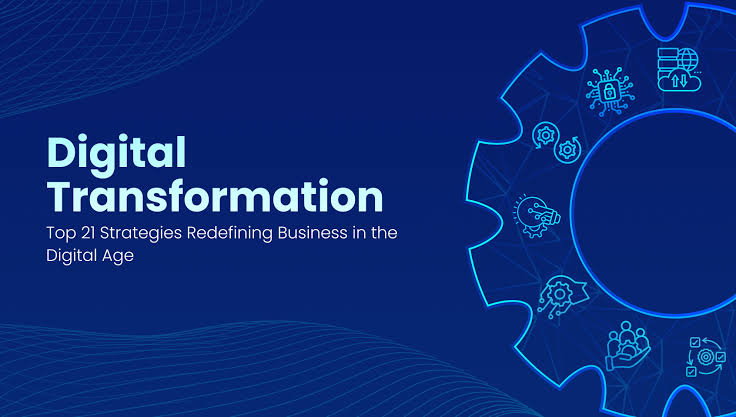Digital transformation in 2025 is not about chasing the latest buzzwords, it's about building resilient, agile, and customer-focused businesses ready to thrive in an unpredictable world. The strategies outlined above offer a roadmap for organizations looking to modernize with purpose and precision.
In 2025, digital transformation is no longer optional—it's a matter of survival and competitive advantage. Businesses across every industry are evolving rapidly, driven by customer expectations, emerging technologies, and global economic shifts. But transformation isn't just about technology; it’s about reshaping how companies think, operate, and deliver value.
To succeed in the digital age, organizations must adopt strategies that are both adaptive and forward-looking. Below are ten of the most effective digital transformation strategies being implemented by leading companies around the world.
10. Embrace a Customer-Centric Mindset
The most successful transformations begin with the customer. Businesses must shift from a product-focused approach to a customer-first mentality, using data and feedback to build more personalized, meaningful experiences.
This includes using customer journey mapping, AI-driven personalization, and omnichannel engagement to understand and anticipate needs. In 2025, organizations that fail to prioritize customer experience are quickly falling behind.
9. Build a Culture of Innovation and Agility
Digital transformation is not just a technical upgrade—it’s a cultural one. Companies that thrive digitally foster an environment where experimentation is encouraged and failure is seen as a learning opportunity.
Agile methodologies, design thinking, and cross-functional teams are central to this strategy. Empowering employees at all levels to propose and test ideas accelerates innovation and keeps organizations responsive in a fast-changing market.
8. Prioritize Cloud Migration and Scalability
Cloud technology remains the backbone of digital transformation in 2025. Migrating core systems, data, and infrastructure to the cloud enables greater flexibility, scalability, and cost-efficiency.
Hybrid and multi-cloud architectures are especially popular, allowing organizations to avoid vendor lock-in and tailor infrastructure to specific needs. Cloud also supports real-time analytics, global collaboration, and easier integration of emerging tech like AI and IoT.
7. Leverage Data as a Strategic Asset
Data is often referred to as the new oil, but its real power lies in how it's analyzed and acted upon. Successful digital transformation strategies involve building robust data governance frameworks and investing in tools that turn raw data into actionable insights.
This includes real-time analytics dashboards, predictive modeling, and AI-powered decision support systems. Companies that treat data as a strategic driver rather than just a byproduct are making faster, smarter, and more informed decisions.
6. Automate and Optimize Operations
Automation is key to reducing costs, increasing speed, and improving accuracy. Robotic Process Automation (RPA), AI, and machine learning are helping organizations streamline everything from customer service to supply chain management.
In 2025, hyperautomation—where AI identifies and automates end-to-end business processes—is becoming mainstream. This strategy frees up human workers for higher-value tasks and ensures consistency and scalability across operations.
5. Strengthen Cybersecurity at Every Level
As digital footprints expand, so do threats. A robust cybersecurity strategy is no longer an afterthought—it must be embedded into every stage of transformation.
Zero-trust architecture, continuous authentication, AI-driven threat detection, and endpoint security are all essential components. Organizations must also invest in regular training and awareness to reduce human-related vulnerabilities. In the digital era, trust is built on security.
4. Invest in Digital Talent and Upskilling
One of the biggest barriers to digital transformation is the lack of skilled talent. Companies that succeed long-term are those that prioritize workforce development alongside technology investments.
This includes reskilling existing employees in areas like cloud computing, data science, cybersecurity, and agile project management. Many organizations are also collaborating with universities, bootcamps, and edtech platforms to build a pipeline of digital-ready professionals.
3. Implement a Seamless Omnichannel Strategy
Customers today expect consistent experiences across all touchpoints—whether it's on mobile apps, websites, social media, or in-store interactions. Omnichannel strategies ensure that data, messaging, and services flow fluidly across platforms.
This also applies internally, where digital tools must integrate employee workflows across devices and departments. In 2025, the line between physical and digital business channels is increasingly blurred, and seamless integration is a must.
2. Focus on ESG and Sustainable Technology
Environmental, Social, and Governance (ESG) goals are now a core part of many transformation roadmaps. Digital strategies are being evaluated not only for profitability but for their impact on sustainability and social responsibility.
Organizations are adopting green cloud services, energy-efficient data centers, circular IT asset management, and AI tools to monitor and reduce carbon footprints. This strategy aligns business growth with environmental stewardship—an essential consideration for modern consumers and investors alike.
1. Create a Unified Digital Vision with Leadership Buy-In
The most critical and foundational strategy for successful transformation is leadership alignment. Without clear direction from the top, even the most well-funded initiatives can lose momentum or become fragmented.
Digital transformation must be guided by a unified vision and roadmap that’s understood by all departments. CEOs, CIOs, and other C-level leaders must champion the cause, allocate appropriate resources, and maintain accountability for progress.
This top-down commitment ensures that digital transformation becomes part of the organization’s DNA, not just a side project.
